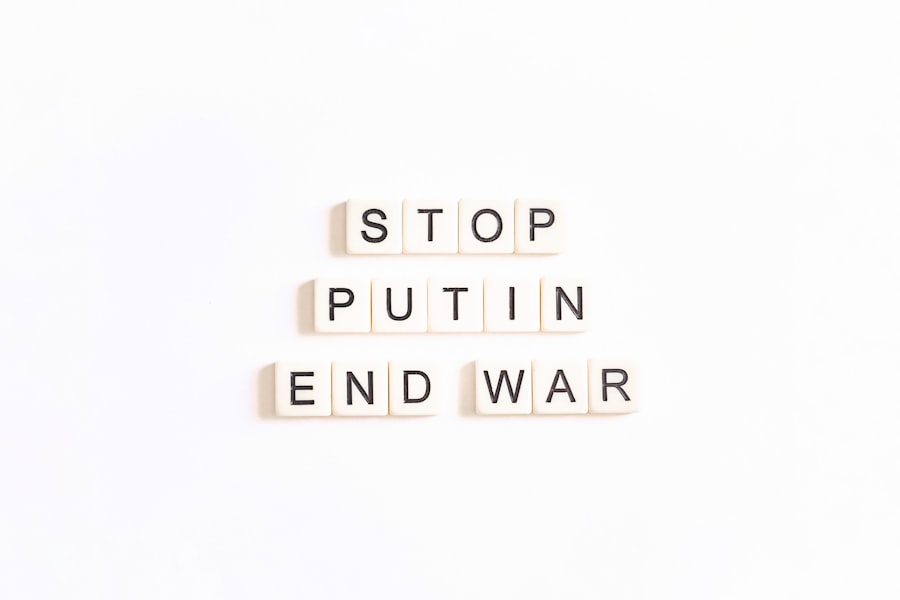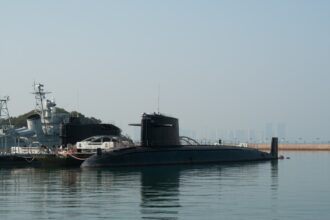The origins of Cold War submarine strategy can be traced back to the aftermath of World War II, a period marked by the emergence of the United States and the Soviet Union as superpowers. The geopolitical landscape shifted dramatically, leading to an arms race that would define the next several decades. Submarines, particularly nuclear-powered ones, became pivotal in this new era of military strategy.
The development of the nuclear submarine was not merely a technological advancement; it represented a fundamental shift in naval warfare. The ability to remain submerged for extended periods and strike from stealthy positions changed the dynamics of maritime conflict and deterrence. As tensions escalated between the two superpowers, both nations recognized the strategic advantages that submarines offered.
The United States, with its fleet of nuclear submarines, aimed to maintain a credible second-strike capability against a potential Soviet attack. Conversely, the Soviet Union sought to develop its own formidable submarine force to counterbalance American naval power. This competition led to a series of innovations and strategic doctrines that would shape submarine warfare for decades.
The Cold War era thus marked the beginning of a new chapter in naval history, where submarines became not just tools of war but symbols of national power and technological prowess.
Key Takeaways
- Cold War submarine strategy was influenced by the need for both the United States and the Soviet Union to maintain a strategic advantage and deterrence against each other.
- Submarines played a crucial role in Cold War conflict by providing a platform for nuclear deterrence, intelligence gathering, and strategic positioning.
- The development of submarine technology during the Cold War saw advancements in propulsion, stealth, and weaponry, leading to the creation of more advanced and capable submarines.
- Stealth and secrecy were paramount in submarine operations during the Cold War, as both sides sought to gain an advantage without alerting the other to their movements and capabilities.
- Submarine bases and patrol routes were strategically important during the Cold War, as they allowed for the positioning and deployment of submarines to key areas for surveillance and deterrence.
The Role of Submarines in Cold War Conflict
Throughout the Cold War, submarines played a crucial role in shaping military strategies and influencing international relations. Their primary function was to serve as a deterrent against nuclear aggression, providing both superpowers with a means to project power while remaining hidden from enemy detection. The presence of submarines in strategic waters acted as a psychological barrier, dissuading adversaries from launching attacks due to the fear of retaliation.
This concept of mutually assured destruction (MAD) hinged significantly on the capabilities of submarines, particularly ballistic missile submarines (SSBNs), which could deliver nuclear payloads from concealed positions. Moreover, submarines were not limited to their deterrent capabilities; they also engaged in various tactical operations that included surveillance and reconnaissance missions. Both the United States and the Soviet Union deployed submarines to gather intelligence on each other’s naval movements and capabilities.
This intelligence-gathering role was vital in understanding the adversary’s strategies and intentions, thereby informing military planning and responses. The Cold War saw submarines evolve into multifaceted instruments of warfare, capable of influencing outcomes far beyond their immediate combat roles.
The Development of Submarine Technology during the Cold War

The Cold War spurred remarkable advancements in submarine technology, driven by the intense competition between the United States and the Soviet Union. The introduction of nuclear propulsion revolutionized submarine design, allowing vessels to operate underwater for extended periods without surfacing for fuel. This technological leap not only enhanced operational range but also enabled submarines to remain undetected for longer durations, increasing their strategic value.
The development of advanced sonar systems further augmented their capabilities, allowing submarines to detect enemy vessels and avoid detection themselves. In addition to propulsion and sonar advancements, the Cold War era witnessed significant improvements in weaponry. Submarines were equipped with sophisticated missile systems capable of delivering nuclear warheads with pinpoint accuracy.
The introduction of submarine-launched ballistic missiles (SLBMs) transformed submarines into formidable platforms for nuclear deterrence. These technological innovations not only enhanced the lethality of submarines but also reshaped naval warfare strategies, as both superpowers sought to outpace each other in terms of capabilities and reach.
The Importance of Stealth and Secrecy in Submarine Operations
| Aspect | Importance |
|---|---|
| Reduced Detection | Essential for avoiding enemy detection and maintaining strategic advantage |
| Operational Security | Protects sensitive information and mission details from adversaries |
| Survivability | Enhances the ability to operate undetected and avoid enemy attacks |
| Strategic Deterrence | Contributes to the effectiveness of submarine-based nuclear deterrence |
Stealth and secrecy emerged as paramount considerations in submarine operations during the Cold War. The ability to operate undetected was crucial for both offensive and defensive strategies. Submarines were designed with features that minimized their acoustic signatures, making them harder to detect by enemy sonar systems.
This emphasis on stealth allowed submarines to conduct covert operations, gather intelligence, and launch surprise attacks without revealing their positions. The culture of secrecy surrounding submarine operations extended beyond technical design; it permeated military doctrine and strategy as well. Both superpowers invested heavily in countermeasures to detect and neutralize enemy submarines while simultaneously enhancing their own stealth capabilities.
This cat-and-mouse dynamic created an environment where information was tightly controlled, and operational details were often classified. The importance of secrecy not only influenced military tactics but also shaped public perceptions of naval power during the Cold War.
The Strategic Importance of Submarine Bases and Patrol Routes
Submarine bases and patrol routes played a critical role in Cold War naval strategy, serving as vital components in maintaining operational readiness and strategic deterrence.
For instance, U.S. bases in places like Guam and Rota allowed American submarines to project power into the Pacific, while Soviet bases in the Arctic facilitated operations in contested waters. Patrol routes were equally significant, as they determined where submarines could operate effectively while minimizing detection risks. Both superpowers developed intricate networks of patrol routes that allowed for continuous surveillance and rapid response capabilities. These routes were often adjusted based on intelligence assessments and geopolitical developments, reflecting the fluid nature of Cold War tensions. The strategic importance of these bases and routes underscored the necessity for both nations to maintain a constant presence in key maritime areas, ensuring that they could respond swiftly to any emerging threats.
The Use of Submarines for Intelligence Gathering during the Cold War

Intelligence gathering was one of the most critical functions performed by submarines during the Cold War. Both the United States and the Soviet Union recognized that understanding each other’s military capabilities and intentions was essential for effective strategic planning. Submarines were deployed on reconnaissance missions to collect data on enemy naval movements, technological advancements, and operational strategies.
This intelligence was invaluable in shaping military responses and informing policymakers about potential threats. The use of submarines for intelligence gathering extended beyond mere observation; it also involved electronic warfare capabilities that allowed them to intercept communications and gather signals intelligence (SIGINT). These operations provided insights into enemy decision-making processes and operational readiness, further enhancing situational awareness for military planners.
As a result, submarines became integral components of broader intelligence networks, contributing significantly to national security efforts during this tumultuous period.
The Evolution of Submarine Tactics and Countermeasures
As submarine technology advanced, so too did tactics employed by both superpowers during the Cold War. The evolution of submarine warfare involved adapting strategies to counter emerging threats while maximizing operational effectiveness. For instance, as sonar technology improved, submarines began employing more sophisticated evasion techniques to avoid detection.
These tactics included altering speed and depth profiles or utilizing natural underwater features for concealment. Countermeasures also became a focal point in submarine operations. Both nations invested heavily in developing anti-submarine warfare (ASW) capabilities designed to detect and neutralize enemy submarines.
This included deploying surface ships equipped with advanced sonar systems, aircraft capable of long-range surveillance, and even other submarines tasked with hunting down adversaries. The ongoing arms race between offensive submarine capabilities and defensive countermeasures created a dynamic battlefield where tactics were continuously refined in response to technological advancements.
The Psychological and Political Impact of Submarine Deterrence
The psychological impact of submarine deterrence during the Cold War cannot be overstated. The mere existence of nuclear-armed submarines served as a powerful symbol of national strength and resolve for both superpowers. This psychological dimension played a crucial role in shaping public perceptions about security and military readiness.
Citizens were acutely aware that their nations possessed the capability to launch devastating retaliatory strikes from concealed platforms deep beneath the ocean’s surface. Politically, submarine deterrence influenced diplomatic relations between the United States and the Soviet Union. The balance of power established through submarine capabilities contributed to a precarious stability known as mutually assured destruction (MAD).
Leaders on both sides understood that any miscalculation could lead to catastrophic consequences, fostering an environment where diplomacy often took precedence over direct confrontation. This delicate balance underscored how submarine strategy transcended mere military considerations; it became intertwined with broader geopolitical dynamics.
The Legacy of Cold War Submarine Strategy in Modern Naval Warfare
The legacy of Cold War submarine strategy continues to shape modern naval warfare today. Many principles established during this period remain relevant as nations navigate complex maritime security challenges in an increasingly multipolar world. The emphasis on stealth, advanced technology, and intelligence gathering has become foundational elements in contemporary naval operations.
Moreover, the lessons learned from Cold War submarine strategies inform current discussions about deterrence and conflict prevention among global powers. As nations invest in modernizing their submarine fleets, they draw upon historical experiences to develop effective strategies that address emerging threats such as cyber warfare or asymmetric conflicts. Thus, while the Cold War may have ended decades ago, its influence on naval strategy endures as nations adapt to new realities in an ever-evolving security landscape.
The Environmental and Human Costs of Cold War Submarine Operations
While Cold War submarine operations were instrumental in shaping military strategies, they also came with significant environmental and human costs that are often overlooked. The construction and maintenance of nuclear submarines raised concerns about radioactive waste disposal and potential accidents at sea. Incidents involving sunken submarines carrying nuclear materials posed environmental risks that could have long-lasting consequences for marine ecosystems.
Additionally, human costs associated with submarine operations included not only the lives lost during training exercises or accidents but also the psychological toll on crews who operated under extreme conditions for extended periods. The isolation experienced by submariners could lead to mental health challenges that persisted long after their service ended. As awareness grows regarding these issues, there is an increasing call for accountability and transparency regarding past practices within naval operations.
The Future of Submarine Warfare in the Post-Cold War Era
Looking ahead, the future of submarine warfare in the post-Cold War era is likely to be shaped by evolving geopolitical dynamics and technological advancements. As new powers emerge on the global stage, traditional notions of deterrence may be challenged by unconventional threats such as cyber warfare or hybrid conflicts involving non-state actors. Submarines will continue to play a vital role in addressing these challenges through their unique capabilities for stealthy operations and intelligence gathering.
Moreover, advancements in artificial intelligence (AI) and unmanned systems are poised to revolutionize submarine warfare further. Autonomous underwater vehicles (AUVs) may complement traditional manned submarines by conducting reconnaissance missions or engaging in anti-submarine warfare without risking human lives. As nations adapt their naval strategies to meet these emerging realities, it is clear that submarines will remain integral components of future maritime security frameworks.
In conclusion, Cold War submarine strategy laid the groundwork for modern naval warfare while highlighting both its complexities and consequences. As nations navigate an increasingly interconnected world fraught with challenges, understanding this legacy will be essential for shaping effective responses that prioritize security while addressing environmental concerns and human costs associated with military operations.
The Silent Service played a crucial role during the Cold War, employing stealth and strategic deterrence to maintain a balance of power. An insightful article that delves into the intricacies of Cold War strategies, including the pivotal role of submarine operations, can be found on the War Room website. This article provides a comprehensive analysis of the tactics and technologies that defined this era of naval warfare. For a deeper understanding, you can read more about these strategies by visiting this article.
WATCH THIS! America’s Nuclear Navy Was Born From Espionage
FAQs
What was the Silent Service Cold War strategy?
The Silent Service Cold War strategy refers to the submarine warfare tactics employed by the United States during the Cold War era to gather intelligence, conduct surveillance, and deter potential adversaries, particularly the Soviet Union.
Why were submarines used in the Silent Service Cold War strategy?
Submarines were used in the Silent Service Cold War strategy due to their stealth capabilities, which allowed them to operate undetected and gather critical intelligence on Soviet naval activities and nuclear capabilities.
How did the Silent Service Cold War strategy contribute to the overall Cold War efforts?
The Silent Service Cold War strategy contributed to the overall Cold War efforts by providing the United States with a covert means of monitoring Soviet activities, maintaining a strategic deterrent, and ensuring a second-strike capability in the event of a nuclear conflict.
What role did submarines play in the Silent Service Cold War strategy?
Submarines played a crucial role in the Silent Service Cold War strategy by conducting covert surveillance, monitoring Soviet naval movements, and serving as a platform for the deployment of nuclear-armed ballistic missiles.
Did the Silent Service Cold War strategy have a significant impact on Cold War history?
Yes, the Silent Service Cold War strategy had a significant impact on Cold War history by shaping the dynamics of nuclear deterrence, intelligence gathering, and strategic military operations between the United States and the Soviet Union.




